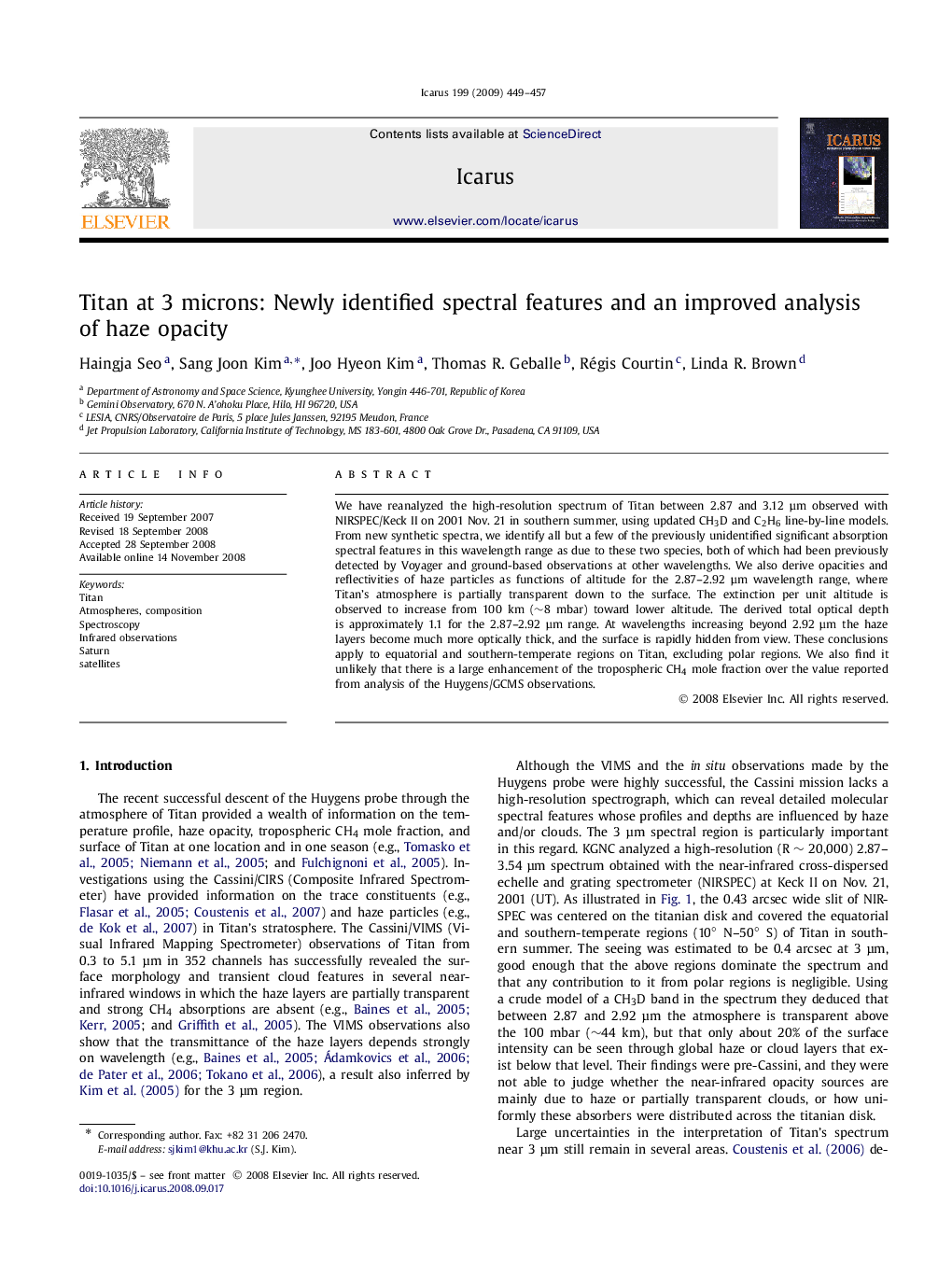| Article ID | Journal | Published Year | Pages | File Type |
|---|---|---|---|---|
| 1775544 | Icarus | 2009 | 9 Pages |
Abstract
We have reanalyzed the high-resolution spectrum of Titan between 2.87 and 3.12 μm observed with NIRSPEC/Keck II on 2001 Nov. 21 in southern summer, using updated CH3D and C2H6 line-by-line models. From new synthetic spectra, we identify all but a few of the previously unidentified significant absorption spectral features in this wavelength range as due to these two species, both of which had been previously detected by Voyager and ground-based observations at other wavelengths. We also derive opacities and reflectivities of haze particles as functions of altitude for the 2.87-2.92 μm wavelength range, where Titan's atmosphere is partially transparent down to the surface. The extinction per unit altitude is observed to increase from 100 km (â¼8 mbar) toward lower altitude. The derived total optical depth is approximately 1.1 for the 2.87-2.92 μm range. At wavelengths increasing beyond 2.92 μm the haze layers become much more optically thick, and the surface is rapidly hidden from view. These conclusions apply to equatorial and southern-temperate regions on Titan, excluding polar regions. We also find it unlikely that there is a large enhancement of the tropospheric CH4 mole fraction over the value reported from analysis of the Huygens/GCMS observations.
Related Topics
Physical Sciences and Engineering
Earth and Planetary Sciences
Space and Planetary Science
Authors
Haingja Seo, Sang Joon Kim, Joo Hyeon Kim, Thomas R. Geballe, Régis Courtin, Linda R. Brown,
